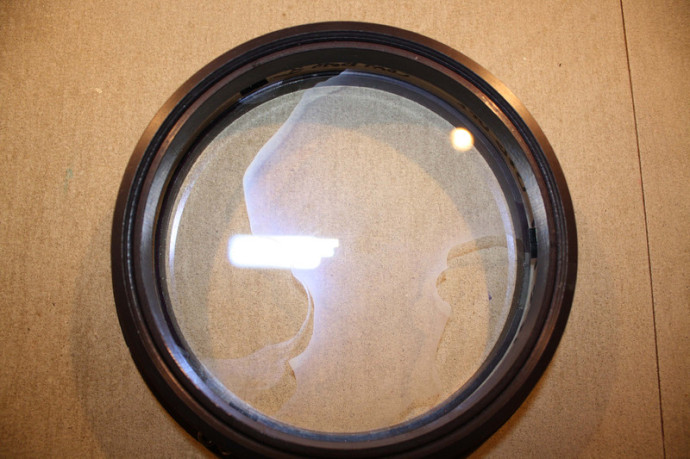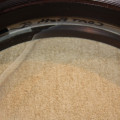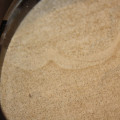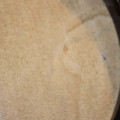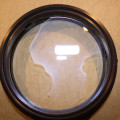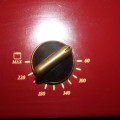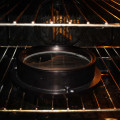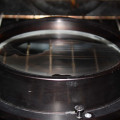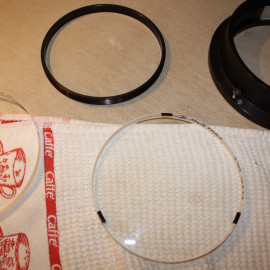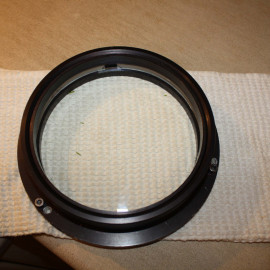IL DOPPIETTO ANNEGATO
Ovvero cosa fare quando entra acqua o umidità tra le lenti del nostro rifrattore. Anno 2013
Or what to do when it enters water or moisture from the lens of our refractor.
PERCHE', PRIMA O POI, ACCADE...
E’ una delle cose che talvolta accadono, e che lasciano basiti e anche furibondi (perché di fatto annullano la sessione osservativa e impongono un lavoro di monta-smonta-ricollima che si gradirebbe evitare). Ma il vedere peggiorare l’immagine restituita e trovare, al controllo, il doppietto del proprio rifrattore completamente pieno di acqua è una di quelle cose che lascia cadere le braccia lungo il corpo e sospirare un “ma perché capitano tutte a me?”.
Quando questo accade la sola cosa che non si deve fare è innervosirsi, e che rappresenta la difficoltà maggiore.
Quando è capitato a me lo strumento, annegato in una notte umida milanese di quasi metà novembre, grondava acqua da ogni parte. Ho smontato il tubo ottico dalla montatura, l’ho riposto in casa e ho installato al suo posto un Cassegrain di pari apertura.
And 'one of the things that sometimes happen, and that will leave you flabbergasted and even angry (because in fact cancel the observing session and require a working stud-disassemble-ricollima that you would like to avoid). But see the picture worse and returned to find, control, the doublet refractor just completely full of water is one of those things that drop your arms along the body and a sigh, "but because they happen to me?".
When this happens the only thing that you should do is get nervous, and that is the major difficulty.
When it happened to me the instrument, drowned in a humid night in Milan almost mid-November, dripping water on every side. I disassembled the optical tube from the frame, I put in the house and I installed in its place a Cassegrain hand opening.
Come si presenta l’obiettivo una volta smontato dal tubo ottico.
COSA FARE
Poi, dopo aver lungamente rimuginato e ascoltato il canto stridulo di alcuni uccelli notturni, ho riposto l’attrezzatura e mi sono dedicato al “malato”.
Innanzitutto va detto che nulla di concreto può essere fatto se non si procede allo smontaggio completo della cella e degli elementi crown e flint. Per procedere a questo ci si potrebbe imbattere in una ghiera che, complice l’umidità penetrata ovunque, non abbia intenzione di svitarsi e lasciare accesso all’obiettivo.
Si deve quindi ricorrere ad una preventiva opera di asciugatura che riesce molto bene se effettuata nel forno di casa (!). Ovviamente la temperatura a cui va sottoposto in complesso cella-obiettivo deve essere molto bassa (generalmente si comincia dai 35°C per finire ai circa 50°C). Una ventina di minuti con modalità “ventilata” (come per alcune torte) e potremo estrarre il nostro obiettivo esternamente asciugato e tiepidino.
A questo punto, almeno nel mio caso, la ghiera di ritenzione del doppietto si svita come per magia e si può rimuovere i due elementi.
Then, after long brooding and heard the shrill singing of some nocturnal birds , I put the outfit and I are dedicated to the "sick" .
First of all it must be said that nothing concrete can be done if you do not do the complete disassembly of the cell and the crown and flint elements . To carry out this you might run into a ring that , thanks to the moisture has penetrated everywhere, not going to unscrew the lens and allow access .
It must therefore resort to a prior work of drying that can very well if done in the oven at home (!) . Obviously the temperature to which should be subjected in complex cell - target must be very low ( generally begins from 35 ° C to finish at about 50 ° C ) . About twenty minutes with mode " breezy " (as some cakes ) and we can extract our goal externally dried and tiepidino .
At this point, at least in my case, the retention ring doublet unscrews like magic and you can remove the two elements.
PULIRE E RIMONTARE
Gli obiettivi di buon livello hanno i vetri segnati lateralmente con indici di posizionamento che indicano la giusta rotazione della lente divergente su quella convergente e, in casi fortunati, spaziatori incollati teneramente a uno dei due elementi (questo è comodissimo perché permette di non perdere la posizione corretta degli spaziatori).
Una volta “staccati” i due elementi si procede alla loro pulizia e asciugatura e al rimontaggio del tutto. Poi, quando il “meteo” lo permette, si deve ovviamente controllare la collimazione e riportarla al suo “optimum”.
Chi non ha dimestichezza con lo smontaggio del complesso ottico di un rifrattore maturerà un’esperienza utilissima e avrà occasione di rendersi conto di quanto sia importante il corretto posizionamento degli elementi che lo compongono.
Questo, ovviamente, risulta relativamente facile se si ha a che fare con un doppietto di tipo Fraunhofer dotato di cella collimabile. Nel caso di doppietti incollati (ad esempio con balsamo del canadà o similare) il processo è più laborioso e verrà spiegato nel capitolo successivo.
The objectives of good quality have marked the glasses with side indices that indicate the proper positioning rotation of the convergent and divergent lens , in fortunate cases, tenderly spacers glued to one of the two elements (this is convenient because you can not lose position correct spacers ).
Once you " loose " the two elements they shall be clean and dry and the replacement of the whole. Then, when the "weather" allows it, you should of course check the collimation and restore it to its " optimum".
Who is not familiar with the disassembly of the complex optical refractor accrue invaluable experience and will have the opportunity to realize how important the correct positioning of the elements that compose it.
This, of course , it is relatively easy if you have to deal with a doublet -type cell has the Fraunhofer collimated. In the case of doublets panels ( eg with Canada balsam or similar) the process is more laborious and will be explained in the next chapter.
